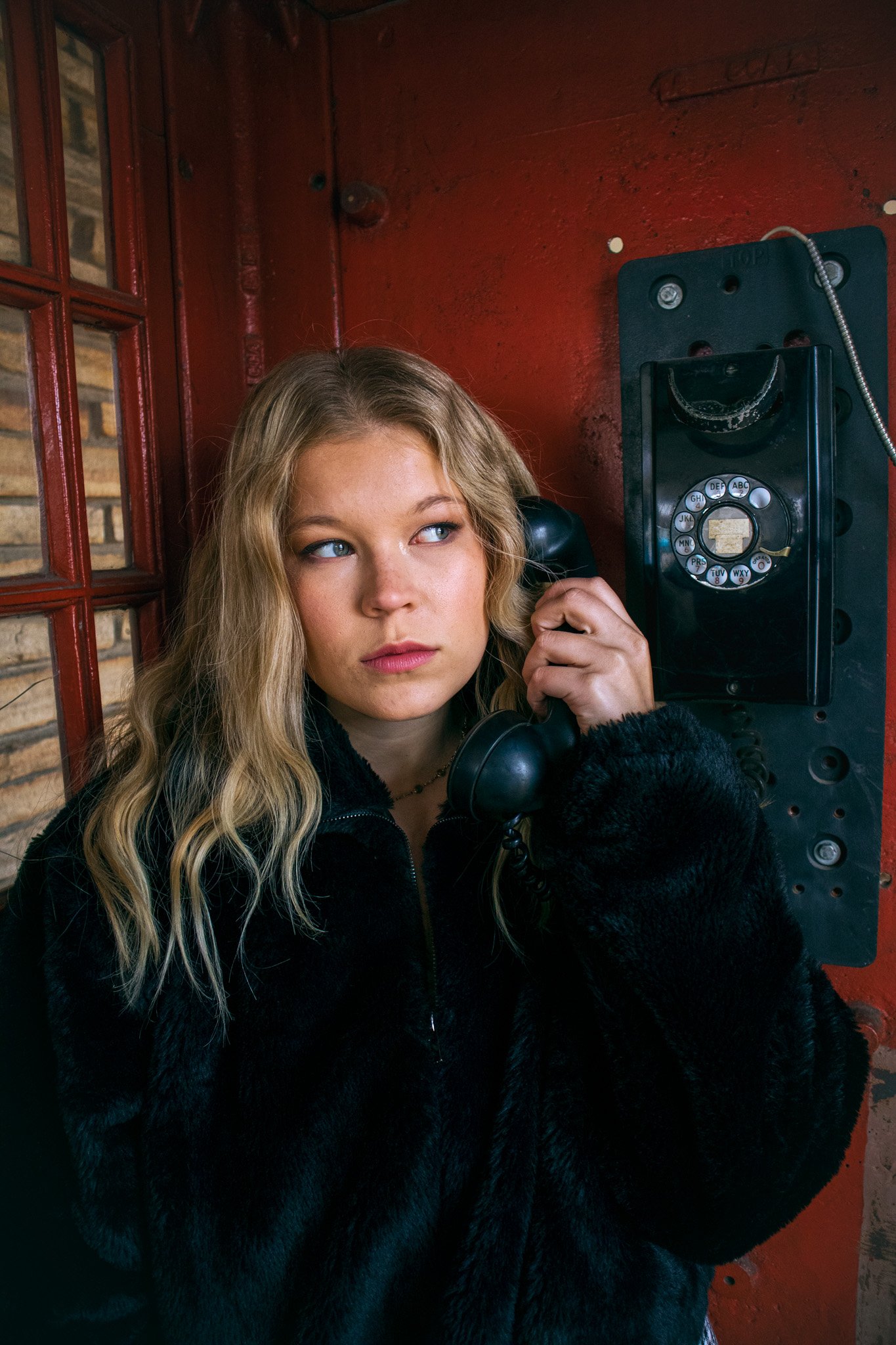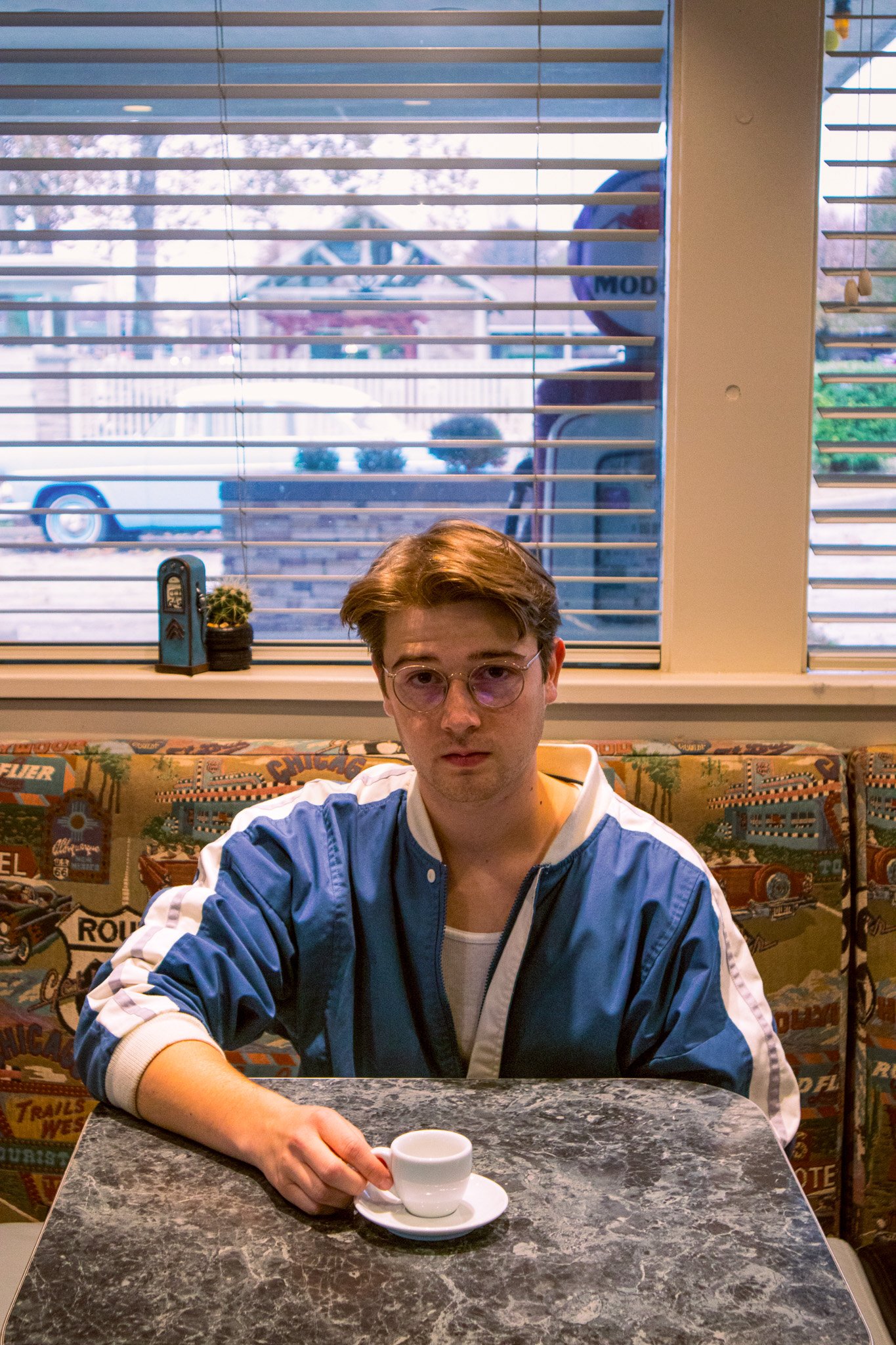The Sopranos: The Fourth Renaissance
Written and Photography By Braeden Cooper
Modeled By Harper Collins , Keely Flanagan, Rylan Hillyer, Bryesen Cooper
Special thanks to Best Western Route 66 Rail Haven
Many college students today most likely remember The Sopranos as “that one really violent show that got me kicked out of the living room once a week.” And, if you had the pleasure of watching The Sopranos every Sunday at 9:00 p.m. from 1999 until 2006, you either had very cool parents, or you’re older than the average student. Regardless, countless television viewers of the modern age would be extremely jealous.
When the show debuted in 1999, viewers were unaware that they were witnessing the birth of a new art form. Television, up until the late 1990s, was sustained by the two-dimensional tropes of light hearted, non-serialized, family-friendly content. David Chase’s, The Sopranos, held up to absolutely none of the expected norms of television. Within the first five minutes of the series pilot, the titular character maniacally laughs as he chases down and breaks the leg of a man who owes him money. You could imagine the surprise from a TV audience who, up until this point, was used to viewing shows such as Friends, Full House, or whatever celebrity-named show they watched.
David Chase introduced the world of television to deeply complex, morally ambiguous characters that embodied the insecurities and issues of the time. The show played on very heavy handed themes, breaking from the normalcy of light-hearted viewing, and the show popularized the use of serialized storytelling on television.
The Sopranos opened the door for many shows that are loved today. In a broad sense, serialized television shows we know and love, such as Game of Thrones or The Last of Us, were only able to exist because of their predecessor, The Sopranos. As Vince Gilligan, creator of “Breaking Bad,” simply put it, “Without Tony Soprano, there would be no Walter White.”
During the midst of the pandemic in 2020, HBO reported that viewership of The Sopranos was up by 179%, outpacing shows such as Westworld and Game of Thrones. The viewership spike in 2020 has proven to be no coincidence. Today, several memes and references flood social media. On top of that, HBO released a Sopranos prequel entitled Many Saints of Newark in 2020; David Chase has since expressed interest in creating more projects related to the show.
Not only has David Chase cashed in on the show’s renewed popularity, but the actors have as well. Michael Imperioli and Steve Schirripa, who played Chris and Bobby on the show, launched a podcast called Talking Sopranos. The podcast covers each episode of the series, allowing the hosts to provide first-hand information involving production and personal experiences. Jamie Lynn-Sigler and Robert Iller, who both played Tony Soprano’s children, teamed up this year to create the Not Today Pal podcast, which frequently features The Sopranos trivia.
So, why, sixteen years after the show ended, has there been a resurgence of popularity for The Sopranos? Today’s youth surely isn’t flocking to the show out of respect for its pioneering of television as an artform. The reasons for viewership, at its core, are much more complex. In a 2021 article on the show’s generation-spanning appeal, New York Times editor Willy Staley suggests the fixation stems from a deep-seeded dissatisfaction with contemporary American society. However, it’s safe to say that is not the only reason for increased viewership..
The Sopranos continues to endure today because of the risks it took several years ago. The show explored topics such as racism, homophobia, and toxic-masculinity in a manner which at first glance may seem insensitive today. The social insensitivities and faults of the characters in the show are the same ones prevalent in society today. Though The Sopranos debuted over twenty years ago, society has barely progressed past the problems it set out to attack.
Perhaps viewers are watching the show for an even different reason. In 2020, it’s perfectly logical to assume viewers were watching the show due to the friend group comradery brought on by such a large cast. Even today there’s a certain level of comfort created when watching the ensemble of characters playing poker and joking around all day.
One undeniable reason for the resurgence of The Sopranos has been because viewers love the aesthetic of the show. While not all of the costumes have stood the test of time, the show is filled with irrefutably cool outfits that have come back in style today. Throughout much of the series, the women are dressed in low-rise jeans and crops tops, which have seen a resurgence in 2023. Much of the men’s fashion, such as polos and tailored suits, were very high-dollar pieces which is why they have remained in style. The show also heavily utilizes animal prints and windbreakers, which have both respectfully received their own resurgences. The early 2000s is an era historically marked by regrettable fashion trends, yet The Sopranos somehow avoided many of the mistakes of the era.
In nearly every facet, the show has aged incredibly well. Over fifteen years since the series ended it still remains relatable to whole new generational audience. Paired with the revival of audience appreciation towards it’s aesthetic, it is hard not to picture yourself in the same clothes driving down Newark in Tony’s Chevy Suburban.







